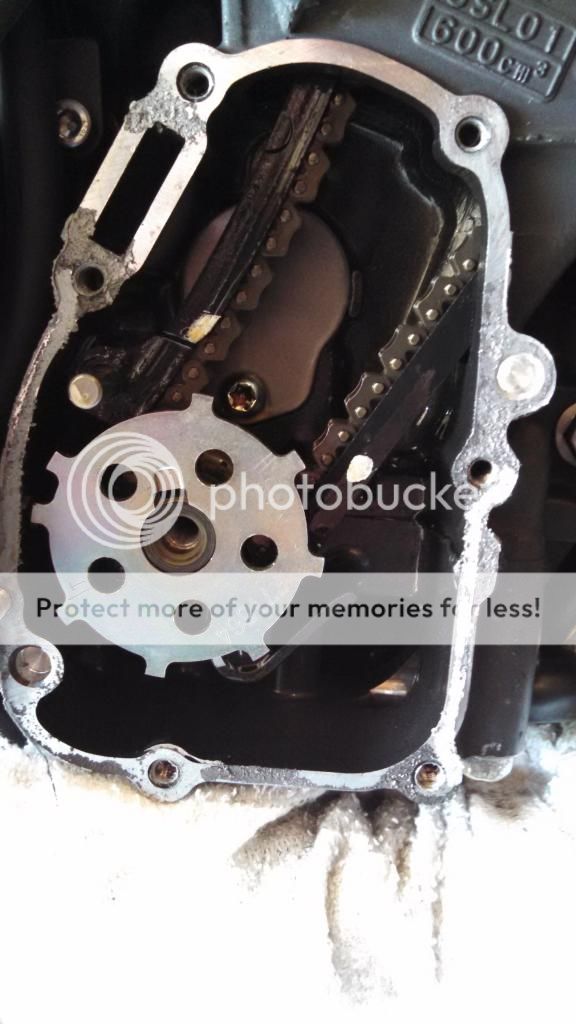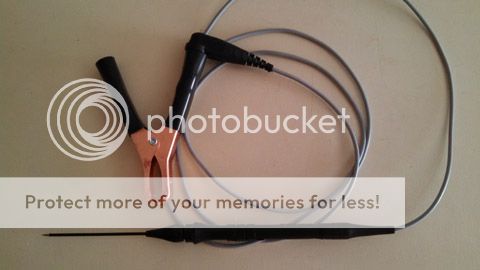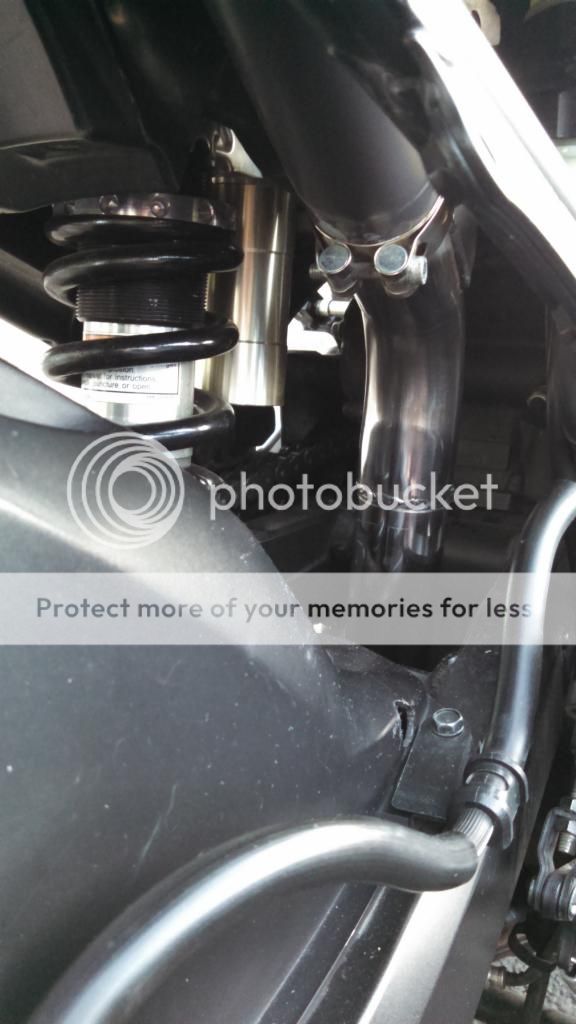A guide on how to fix that off idle snatch! There are many complaints about off idle transition when getting back on the throttle to pull out of turn. Some would say its that little dead zone or jerk felt when getting back on the throttle which unloads the suspension upsetting the bike. This guide may help remove that throttle response issue.
Here is an option and you need to decide if its right for you. The expense is minimal and the return is great as it makes the bike a pleasure to ride. Also, it can be undone as its not permanent. That said, its not for everyone. THIS IS A GUIDE ONLY! USE YOUR BEST JUDGMENT!
BASICS:
Advance ignition timing, Add fuel via CO adjust, install AIS block off plates, install test type mid-pipe (CAT-Delete).
- Everything except the CO adjust requires basic wrenching skills.
In my case, I did each item separately over time. Each appeared to individually reduce the "off to on throttle" transition issue. However, this does not solve it 100%. It does reduce it to a point that most will be completely satisfied. Also this was a by-product of another goal which was to get better throttle response from the FZ and maybe a little more pull. These items were accomplished! :thumbup: The bikes runs great!
MOST BANG PER BUCK:
+ Advance ignition 4.0° to 5.0° // Cost = $0.00
+ Add fuel via CO adjust ~ 25 point increase. // Cost = $0.00 (stopped at 38/38)
+ Install Mid-pipe / test pipe // Cost = $6.00 for SS pipe and some beer!
- Install AIS block off plates // Cost = $22.00, this is NOT required and it won't help this! It's needed for dyno runs only.
Note: Adding fuel seems like it will hurt the MPG's but if the ignition is advanced, its a wash. Instead you get great running engine.
Skills required:
- able to wrench, do basic math, measure, cut, weld, disassemble and reassemble. Although $$$ can be thrown at the welding part and you can buy an "off the shelf" CAT-Delete pipe.
- pay attention to detail!
Time required:
- depends as it could be done all at once or a piece at time.
- figure 8 hours if your slow.
+ 1.5 hrs for trigger wheel mod and install.
+ 0.75 hr install CAT-Delete pipe (must pull tail apart).
++ to cut and weld your own pipe. TIG gun needed. 1.75" OD, 0.062" thick.
+ 0.75 hr CO mod. (lift tank, insert wire, hold buttons, record values, change values, reassemble)
+ 1.5 hr install AIS block off plates. You can buy or fab these.
Tools:
- basic tools
* Exceptions / special tools:
+ Veneer Calipers with 0.001" resolution
+ Dial indicator with 0.001" resolution (can be done with veneer calipers)
+ AIR Impact gun much easier to remove bolt at trigger wheel
+ Small Files
+ Vise
+ Patience!
Expense:
- depends on your skills and materials available.
- spare trigger wheel, although its not required unless you want to put it back.
- may work with stock muffler but I never tried. Bike has 2 bro pipes on it. I bought some SS pipe and cut out an unwanted section of the mid-pipe and welded it back together. A 12" section of 304SS 1.75" X 0.062" is required or buy a complete one and drop it in.
- AIS Block off plates (purchased)
DRAWBACKS:
- TO BENEFIT FROM ADVANCING THE IGNITION TIMING, BETTER FUEL IS REQUIRED! In the US, that means 91 octane fuel! YOU MUST RUN A HIGHER GRADE OF FUEL OR YOU WILL DESTROY THE ENGINE!
- YOU MUST COMMIT TO THIS CHOICE!
- Adding Fuel via CO adjust may require TB Sync to correct idle stability. A quick fix is to turn each sync screw counter clockwise 1/2 to 3/4 turn (4 total). The amount will vary with how much you offset the original CO values.
Application:
- Track Bikes and perhaps others....
- Bikes that currently have no driveability complaints. Fix these issues first.
- Specifically it worked well on a US deployed 2008 bike.
GUIDE:
- I'm not going to hold your hand as all of the information is on this site.
- Most will be pulled from existing threads.
08 FZ6 Condensed Build thread ~Final Impact~ * Post # 10
-> 08 FZ6 Condensed Build thread ~Final Impact~
Final Impact Winter project; playing w/trigger * Post # 10 & 19
-> Final Impact Winter project; playing w/trigger
Enable Co Adjustment USA Only (Lean / Richen) * Post # 1, 7, 13
-> Enable Co Adjustment USA Only (Lean / Richen)
My journey went like this: Trigger wheel mod, CO mod, AIS plates, and then the test pipe. The test pipe was the kicker that really woke the whole thing up. It pulls better, sounds better, has great throttle response, pulls more evenly, and of course the topic of this post!
TAGS:
Throttle Response, Throttle Transition, Re-wet, Throttle Tamer, Ignition Advance, Timing Advance, CAT-Delete, Test Pipe,
lol --> "You may add 25 tag(s) to this thread." Ya, right! Which will be modified and/or deleted by stupid software.....
EDIT LIST: 2015-03-19, typo and clarification about sync screws
Here is an option and you need to decide if its right for you. The expense is minimal and the return is great as it makes the bike a pleasure to ride. Also, it can be undone as its not permanent. That said, its not for everyone. THIS IS A GUIDE ONLY! USE YOUR BEST JUDGMENT!
BASICS:
Advance ignition timing, Add fuel via CO adjust, install AIS block off plates, install test type mid-pipe (CAT-Delete).
- Everything except the CO adjust requires basic wrenching skills.
In my case, I did each item separately over time. Each appeared to individually reduce the "off to on throttle" transition issue. However, this does not solve it 100%. It does reduce it to a point that most will be completely satisfied. Also this was a by-product of another goal which was to get better throttle response from the FZ and maybe a little more pull. These items were accomplished! :thumbup: The bikes runs great!
MOST BANG PER BUCK:
+ Advance ignition 4.0° to 5.0° // Cost = $0.00
+ Add fuel via CO adjust ~ 25 point increase. // Cost = $0.00 (stopped at 38/38)
+ Install Mid-pipe / test pipe // Cost = $6.00 for SS pipe and some beer!
- Install AIS block off plates // Cost = $22.00, this is NOT required and it won't help this! It's needed for dyno runs only.
Note: Adding fuel seems like it will hurt the MPG's but if the ignition is advanced, its a wash. Instead you get great running engine.
Skills required:
- able to wrench, do basic math, measure, cut, weld, disassemble and reassemble. Although $$$ can be thrown at the welding part and you can buy an "off the shelf" CAT-Delete pipe.
- pay attention to detail!
Time required:
- depends as it could be done all at once or a piece at time.
- figure 8 hours if your slow.
+ 1.5 hrs for trigger wheel mod and install.
+ 0.75 hr install CAT-Delete pipe (must pull tail apart).
++ to cut and weld your own pipe. TIG gun needed. 1.75" OD, 0.062" thick.
+ 0.75 hr CO mod. (lift tank, insert wire, hold buttons, record values, change values, reassemble)
+ 1.5 hr install AIS block off plates. You can buy or fab these.
Tools:
- basic tools
* Exceptions / special tools:
+ Veneer Calipers with 0.001" resolution
+ Dial indicator with 0.001" resolution (can be done with veneer calipers)
+ AIR Impact gun much easier to remove bolt at trigger wheel
+ Small Files
+ Vise
+ Patience!
Expense:
- depends on your skills and materials available.
- spare trigger wheel, although its not required unless you want to put it back.
- may work with stock muffler but I never tried. Bike has 2 bro pipes on it. I bought some SS pipe and cut out an unwanted section of the mid-pipe and welded it back together. A 12" section of 304SS 1.75" X 0.062" is required or buy a complete one and drop it in.
- AIS Block off plates (purchased)
DRAWBACKS:
- TO BENEFIT FROM ADVANCING THE IGNITION TIMING, BETTER FUEL IS REQUIRED! In the US, that means 91 octane fuel! YOU MUST RUN A HIGHER GRADE OF FUEL OR YOU WILL DESTROY THE ENGINE!
- YOU MUST COMMIT TO THIS CHOICE!
- Adding Fuel via CO adjust may require TB Sync to correct idle stability. A quick fix is to turn each sync screw counter clockwise 1/2 to 3/4 turn (4 total). The amount will vary with how much you offset the original CO values.
Application:
- Track Bikes and perhaps others....
- Bikes that currently have no driveability complaints. Fix these issues first.
- Specifically it worked well on a US deployed 2008 bike.
GUIDE:
- I'm not going to hold your hand as all of the information is on this site.
- Most will be pulled from existing threads.
08 FZ6 Condensed Build thread ~Final Impact~ * Post # 10
-> 08 FZ6 Condensed Build thread ~Final Impact~
Final Impact Winter project; playing w/trigger * Post # 10 & 19
-> Final Impact Winter project; playing w/trigger
Enable Co Adjustment USA Only (Lean / Richen) * Post # 1, 7, 13
-> Enable Co Adjustment USA Only (Lean / Richen)
My journey went like this: Trigger wheel mod, CO mod, AIS plates, and then the test pipe. The test pipe was the kicker that really woke the whole thing up. It pulls better, sounds better, has great throttle response, pulls more evenly, and of course the topic of this post!
TAGS:
Throttle Response, Throttle Transition, Re-wet, Throttle Tamer, Ignition Advance, Timing Advance, CAT-Delete, Test Pipe,
lol --> "You may add 25 tag(s) to this thread." Ya, right! Which will be modified and/or deleted by stupid software.....
EDIT LIST: 2015-03-19, typo and clarification about sync screws
Last edited:



